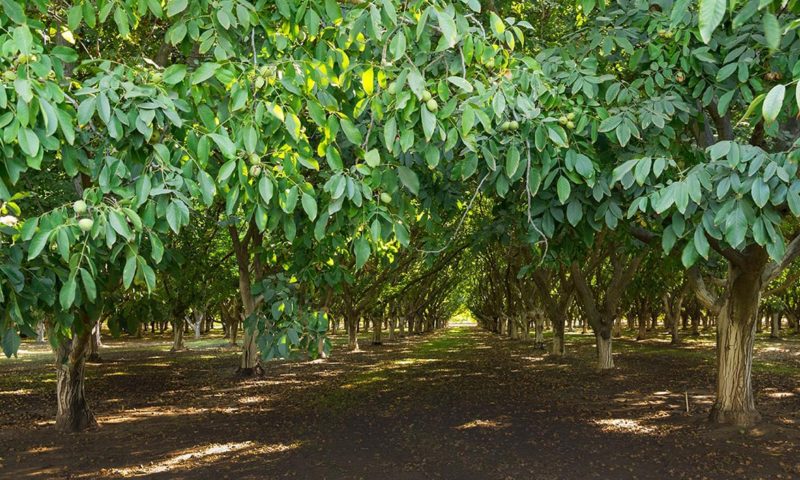California agriculture is increasingly regulated for health and safety, air quality, water quality and quantity of water usage. State regulations have resulted in changes in farm management, record keeping, technologies, equipment, economics, and increased time spent understanding and keeping up with new fees, reporting requirements, and education. Regulations on agriculture seem to be changing all the time and are becoming more complex. This update focuses on regulations on agriculture related to water (quality and quantity) mandated by the state and provides a comprehensive breakdown of SGMA from the past, present and future projections.
SGMA – Sustainable Groundwater Management Act – Background
In 2014, California became the last state in the U.S. to formally regulate groundwater. Prior to SGMA, California saw groundwater adjudications that brought competing interests together for a court-supervised negotiation and settlement over groundwater rights in a basin. California also created voluntary groundwater regulation through Assembly Bill (AB) 3030 and other programs in the 1990s that encouraged, but did not mandate, aggressive groundwater regulation and management. These efforts had positive impacts in specific areas in California but did not address the statewide crisis of overdrafted groundwater basins.
What is SGMA?
After years of debilitating drought, the state of California enacted SGMA to ensure sustainable annual withdrawals by measuring sustainability metrics in groundwater basins. Local agencies, known as Groundwater Sustainability Agencies (GSAs), were given authority to regulate groundwater subject to stakeholder input. GSAs are mandated to develop a Groundwater Sustainability Plan (GSP) for approval by the California Department of Water Resources (DWR).
California’s 515 groundwater basins encompass 40 million acres (over 40% of California’s land area), 82% of the population, and 97% of the State’s agricultural lands.
94 of these basins were identified as high or medium priority and 21 of these basins (called Priority 1 basins) are subject to conditions of critical overdraft, which means that continuing current water management practices would likely result in significant adverse overdraft-related environmental, social, or economic impacts. All 94 medium and high priority basins have formed GSAs and must adopt and submit a GSP. The remaining 421 basins are not required to form GSAs and submit GSPs.
GSAs possess broad authority to regulate groundwater to reach sustainable yield for their designated groundwater basin, including the ability to regulate exchanges of water and the health of a groundwater basin. They are also responsible for preventing further harm, referred to as “undesirable results,” in the groundwater basins that are currently overdrafted and/or labeled as high or medium priority. A GSA may implement fees to achieve the sustainable yield objective required by SGMA and combat these undesirable results. The powers are broad, but SGMA requires a GSA to issue a Groundwater Sustainability Plan by 2020 for basins in overdraft, and 2022 for medium- and high-priority basins. The GSP clarifies how the GSA will manage water in the basin. GSAs must consult with water right holders, agricultural operations, and relevant stakeholders as part of the GSP creation process. Failure of the GSA to engage all stakeholders will likely result in a rejection of the GSP by DWR until proper stakeholder input is gathered. GSAs have the power to restrict groundwater pumping and impose new fees on groundwater extraction.
What is the Impact of SGMA on Agriculture?
Farmers and other water users alike will need to account for water usage more accurately under SGMA. As the saying goes, “you can’t manage what you don’t measure.” As part of their GSPs, GSAs must estimate the sustainable yield for their subbasins and determine how to achieve balance between inputs and outputs. This determination is accomplished through modeling and monitoring described in the GSP that will continue to provide data for adaptive management. In overdrafted basins, sustainable yield has been exceeded, and it is up to the GSA to figure out how to bring pumping back into balance. For this reason, measuring water usage, especially by agriculture has become critical in Priority 1 basins. That said, agriculture will be asked to account for water use, determine how water can be conserved, and account for pumping.
According to the Water Blueprint for the San Joaquin Valley, it is estimated that between 500,000 and 1,000,000 acres of farmland will be taken out of production to conserve groundwater. Assembly Bill 252 would create a land repurposing program under the Department of Conservation to provide grants for local groundwater agencies to incentivize farmers to take land out of production. That retired farmland could be repurposed for a variety of uses such as solar, grazing, groundwater storage or restoring habitat for native species.
What is the Benefit of SGMA to Agriculture?
Research and development that refines our understanding of what we are trying to manage is prioritized more than ever, including increased focus on:
- Water accounting, leading to development of new data resources and technologies that can be used to better understand individual groundwater basins and how to manage them so that agriculture and the economy it supports thrives. This understanding is being improved through additional data collection and modeling to understand how different scenarios (pumping, climate change, urban growth) impact sustainable yield of aquifers.
- The important role that agricultural irrigation plays in groundwater recharge, a perspective that balances the continual demand for conservation in agricultural water use. Without an understanding of agricultural recharge, conservation can do more harm than good for water supplies and water quality management.
What’s Happening and What’s Coming Up?
In January 2020, 46 GSPs from critically overdrafted basins were submitted to DWR. The number of GSPs per basin ranged from three to seven in basins where multiple GSPs were submitted. In January 2022, the remaining 64 GSPs from medium and high priority basins (not critically overdrafted) were submitted. From the time of submittal, DWR has two years to complete GSP review, which includes a public comment period and responding to those comments. After review, DWR will either approve the GSP, deem it incomplete and ask the GSA to correct deficiencies in the plan within 6 months, or deem the plan incomplete, at which point the State Water Board can intervene. Though the review process can take up to two years, GSA’s are required to implement their plans immediately. Implementation includes complying with annual reporting requirements, addressing data gaps with additional monitoring, data collection at existing wells in identified representative monitoring networks, inter-basin coordination with neighboring GSAs, investigating potential projects and management actions, and securing funding for projects.
The CWC will remain actively engaged on all regulatory matters as they pertain to water and drought and will keep the walnut industry promptly updated as more information becomes available.
For more information on SGMA, please visit the California Department of Water Resources link here: https://water.ca.gov/programs/groundwater-management/sgma-groundwater-management



